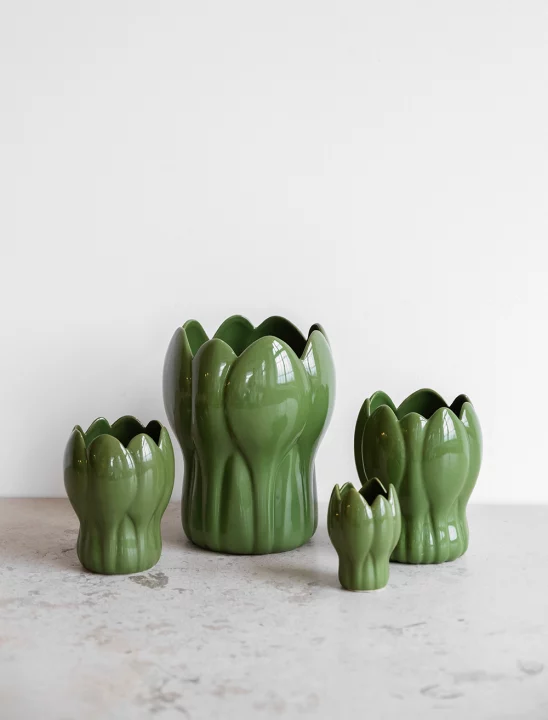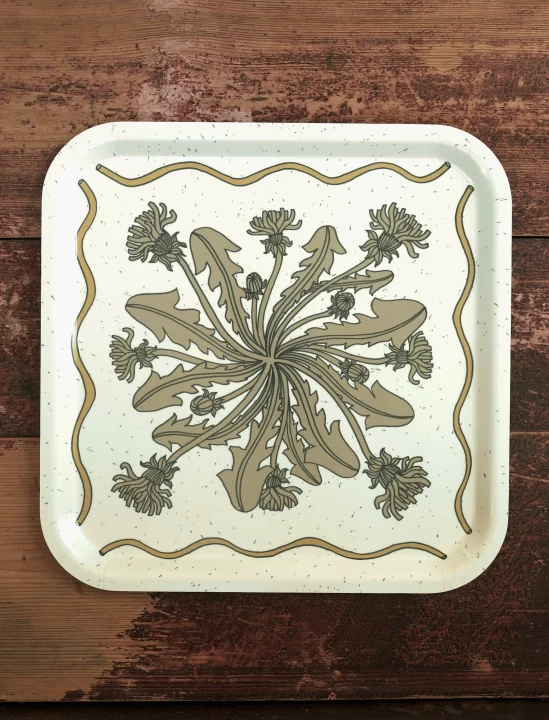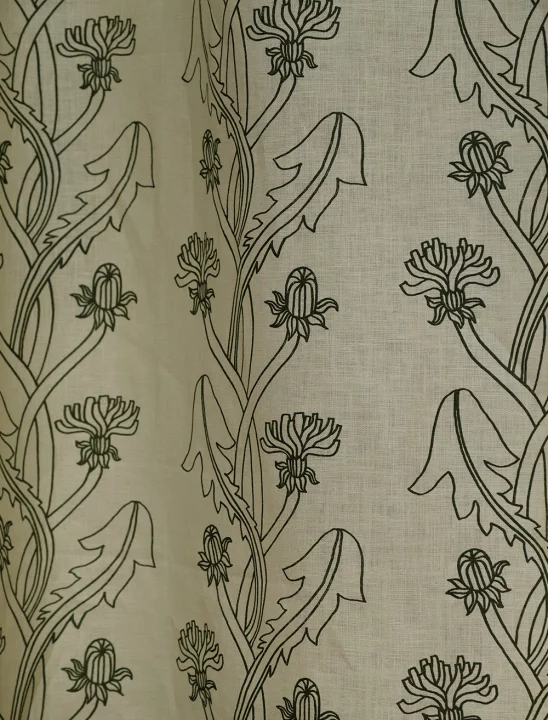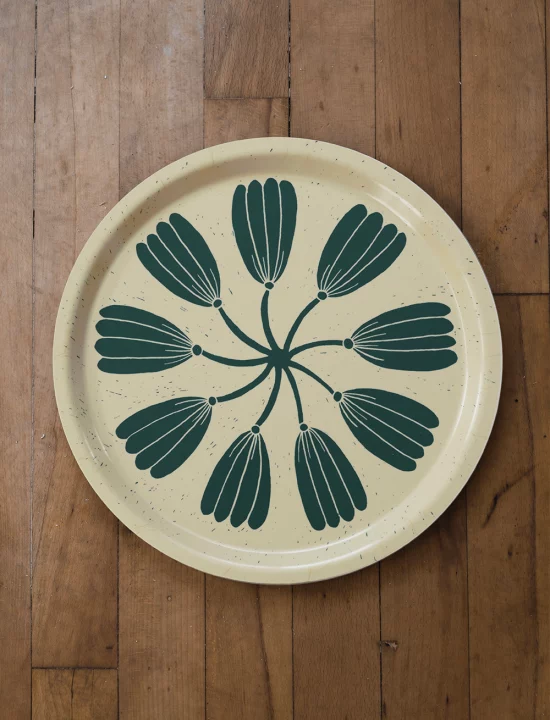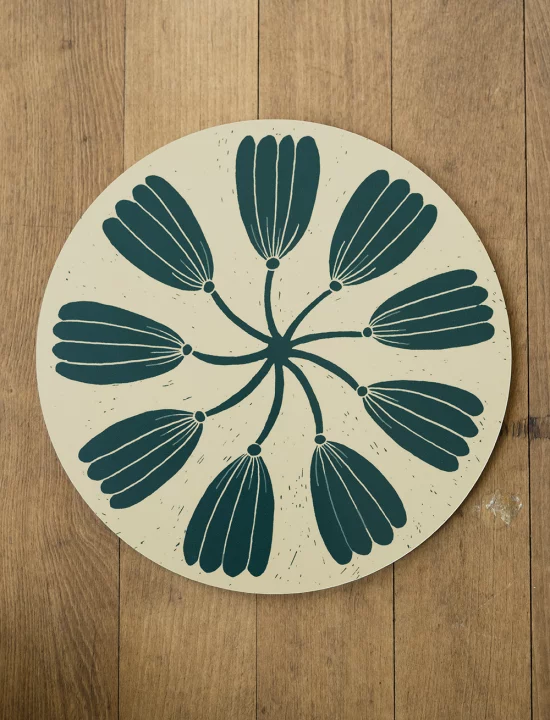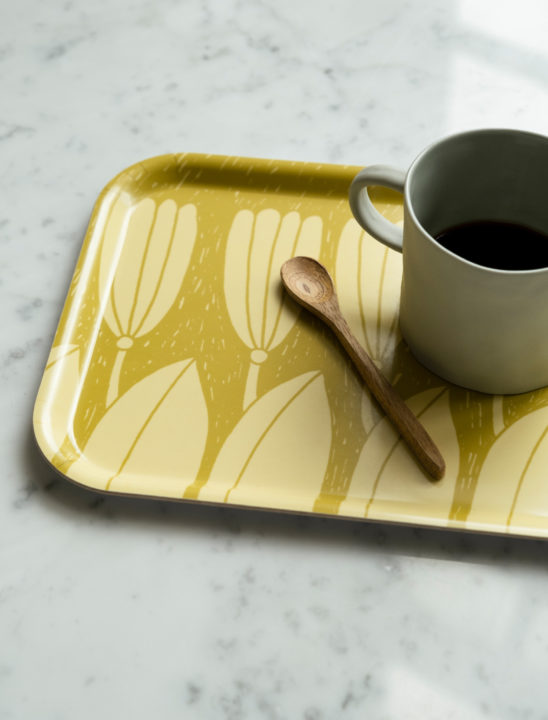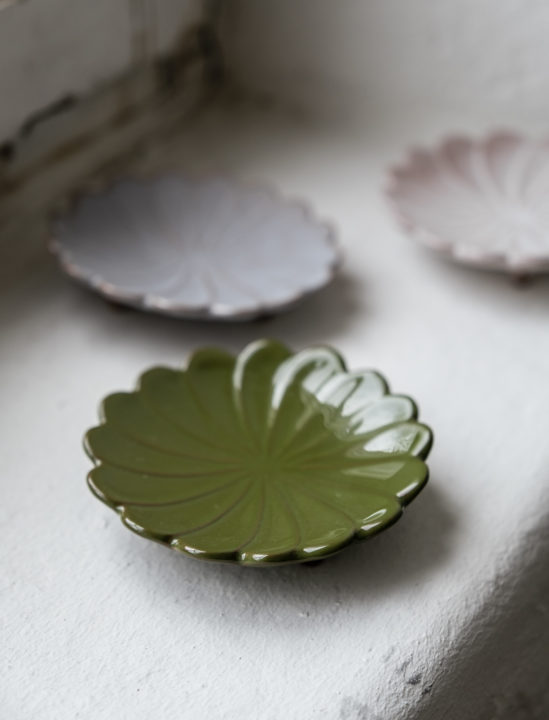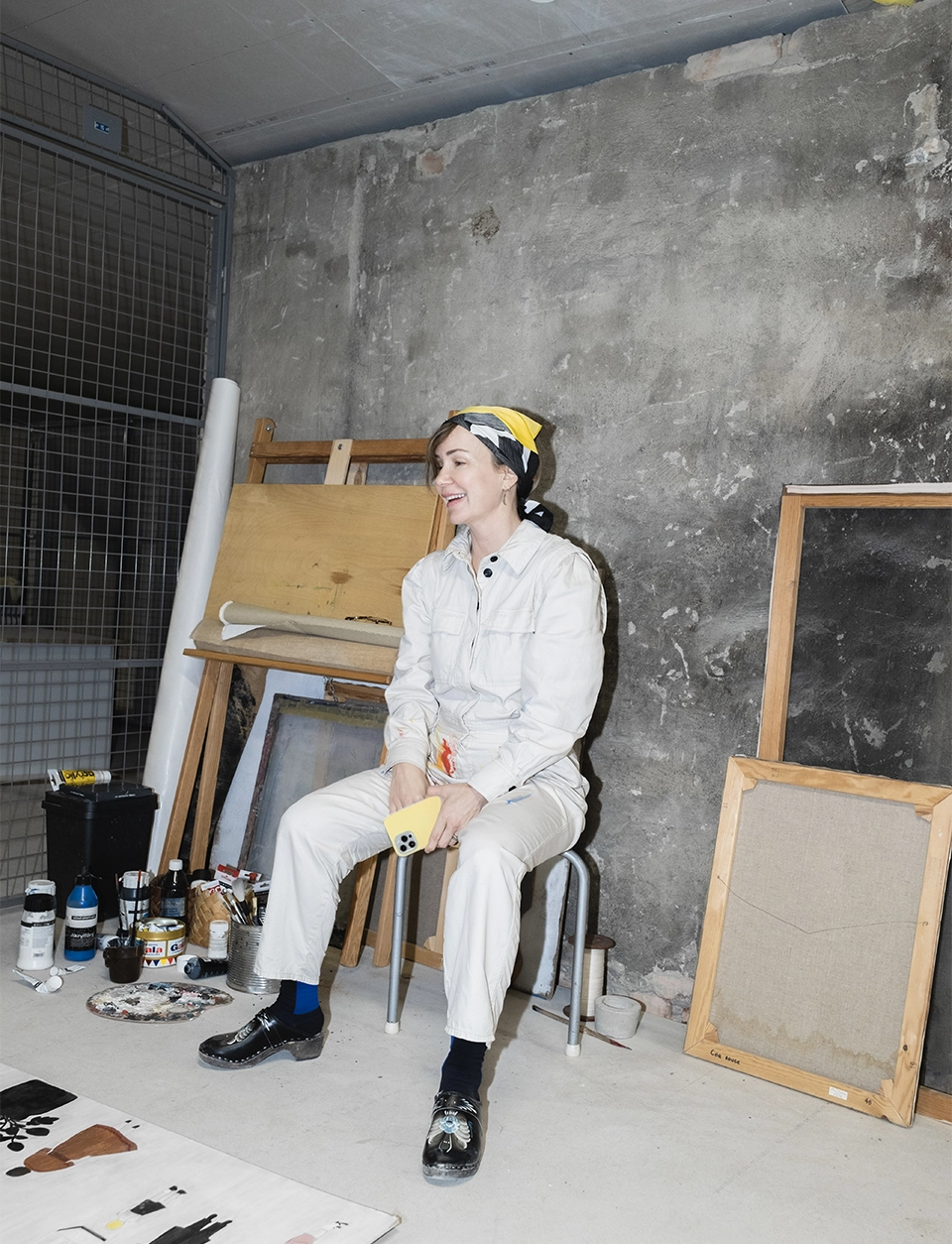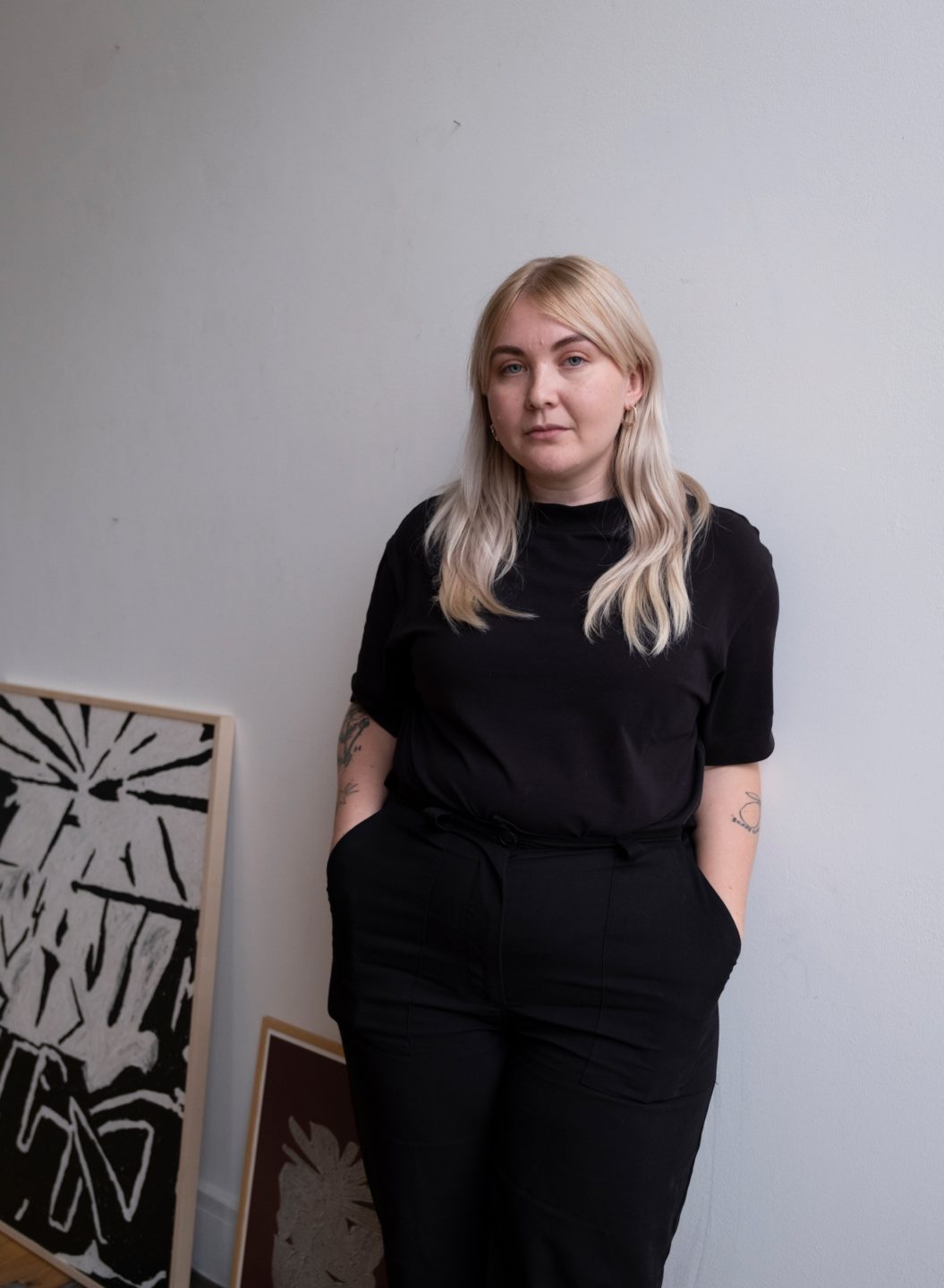Kristine Thenman
Kristine Thenman creates stories with clay that have their origin in nature. Her idiom and strong illustrative manner with organic patterns associates both Art Nouveau and folklore.

Surrounded by the Värmland forest in Edane outside Arvika in Sweden, where she grew up, Kristine carries out her work with clay. In her family, the forest has always been a natural part of everyday life and has stood for permanence and security. With a deep anchoring in the material and the place, Kristine creates something familiar and safe in her ceramics, while the process is playful and free. One thing leads to another, and with inspiration from art nouveau and folklore, the forms of nature and the decorative are drawn out of the clay. The recognizability and warm tones of the earthenware connect to the local pottery tradition that is there as a backbone to lean on. At the same time, in Kristine’s work there is always a renewal that sharpens the viewer’s gaze on the domestic and makes the forest appear in new forms.
Thenman was educated in Bergen and at HDK in Gothenburg. Through several solo shows and participation in a large number of group exhibitions, she has continued exploring different environments and enchanting the contemporary art scene as well as the world of crafts with her curious shapes.
For Fine Little Day, she has also made patterns for textiles, vases, trays and other products.

I often begin with a word or a form as a starting point, and then model intuitively based on that. One leads to the other. In parallel, I sketch with pen and paper but also by photographing. In this way, I build up a layer of shapes that I can pick from. A leftover shape from a previous project can get a new life and be completed in the encounter with something else. In this way, the projects overlap and slide into each other. I often start at one point and end up somewhere completely different.


The vase KROKUS, exclusively designed for Fine Little Day, is a poetic and organic bell-shaped sculpture, where Kristine Thenman connects her various art-making skills together.
KROKUS is made of earthenware and is available in four sizes and three colors. With or without flowers in it, it captures the attention in the room. The pointed leaf-shaped edge allows for compositions where stems can rest between the leaves. Arrange it in a group with several sizes or place a solitaire on the table. The vase is molded and glazed in a handcrafted way. The presence of the hand is always present in the end product, a feature that we love, as it tells the story of how the product is made.
"I love to model. To let my hand work intuitively and find shapes in the lump of clay. The vase came about when I needed some small vases for the children's first spring bouquets, the ones without leaves and not so much stalk for that matter either. The crocus is a favorite when it appears as a splash of color in the gray-beige last year's grass, in early spring. ” – Kristine Thenman
Artists
![]() FLD x Hasselsson
FLD x Hasselsson![]() Kakan Hermansson
Kakan Hermansson![]() Moira Frith
Moira Frith![]() Brian McHenry
Brian McHenry![]() Elisabeth Dunker
Elisabeth Dunker![]() Yoshiko Hada
Yoshiko Hada![]() Frida Mälarborn Hoshino
Frida Mälarborn Hoshino![]() Johanna Grigarová
Johanna Grigarová![]() Maria Hanseblad
Maria Hanseblad![]() Emilia Ilke
Emilia Ilke![]() Freja Erixån
Freja Erixån![]() Oscar Kaleva Karlsson
Oscar Kaleva Karlsson![]() Alina Vergnano
Alina Vergnano![]() Linnéa Andersson
Linnéa Andersson![]() Unni Toivola
Unni Toivola![]() Studio Oyama
Studio Oyama![]() Kajsa Cramer
Kajsa Cramer![]() Vandorff
Vandorff![]() EKTA
EKTA![]() Mogu Takahashi
Mogu Takahashi![]() Ina Marie Winther Åshaug
Ina Marie Winther Åshaug![]() Karin Cyrén
Karin Cyrén![]() Emily Bratt
Emily Bratt![]() Sofia Lind
Sofia Lind![]() Dyeforindigo
Dyeforindigo![]() Isis Maakestad
Isis Maakestad



